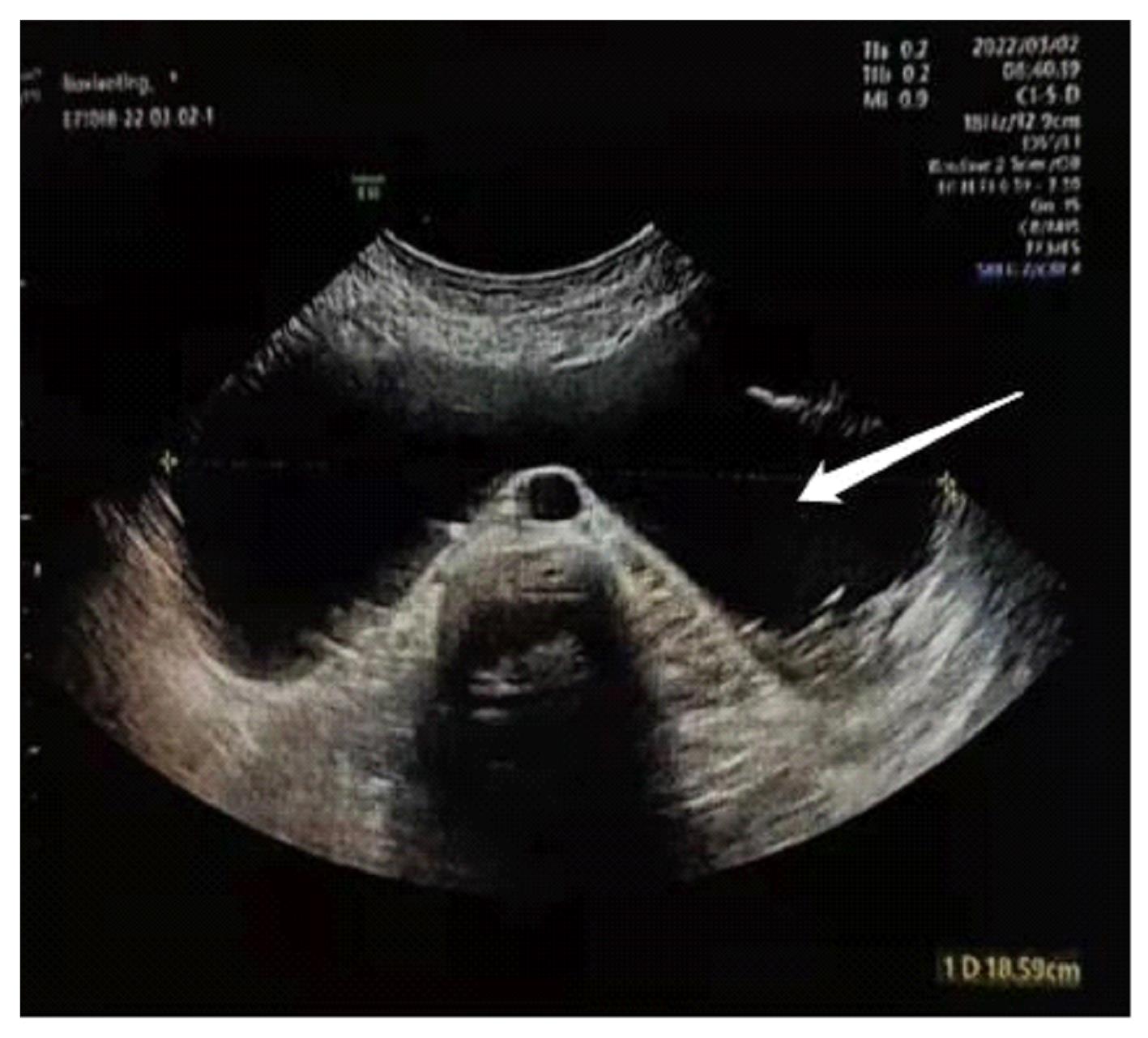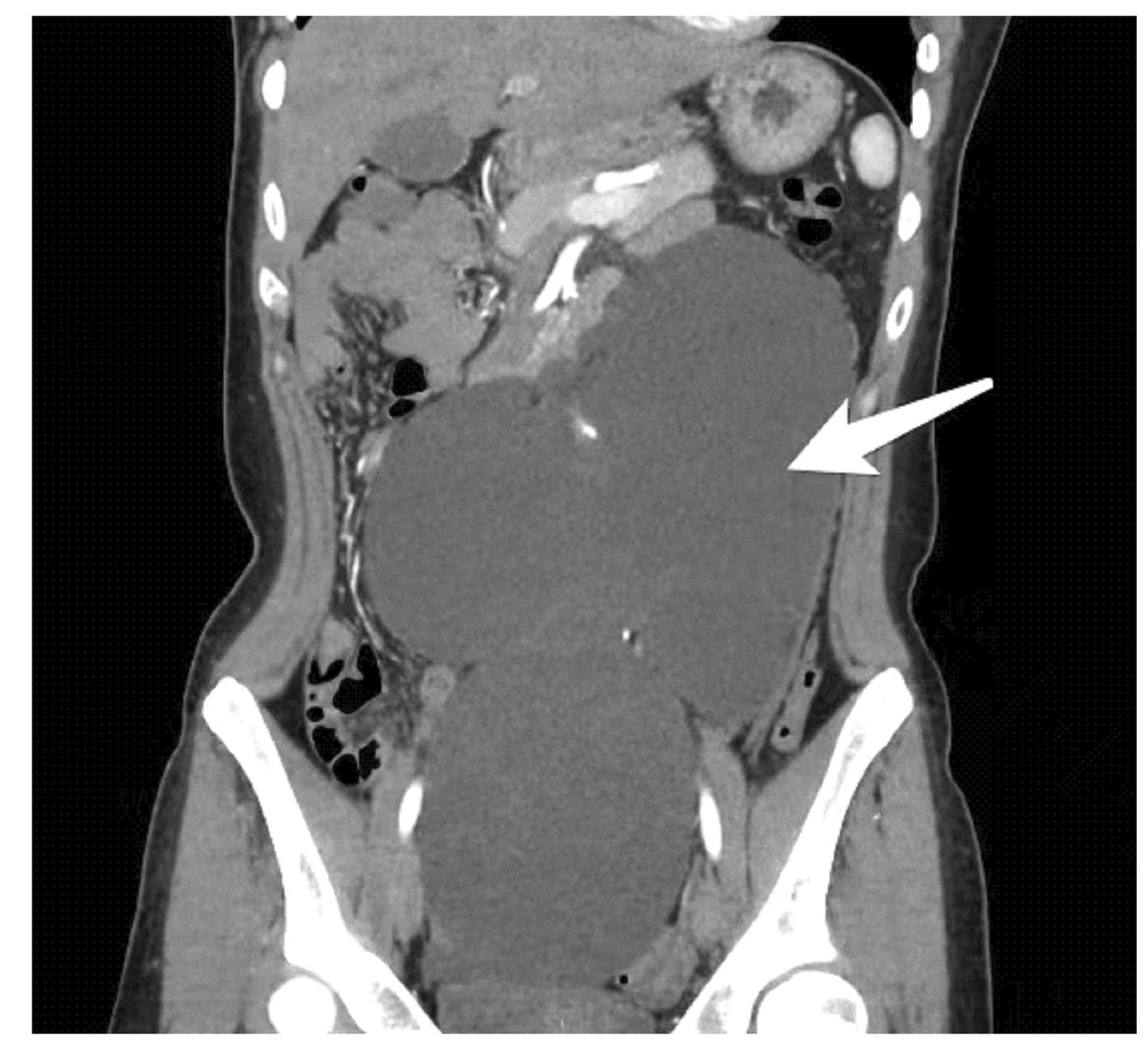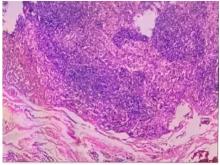吉林大学学报(医学版) ›› 2023, Vol. 49 ›› Issue (2): 508-513.doi: 10.13481/j.1671-587X.20230228
腹膜后巨大淋巴管瘤1例报告及文献复习
杨胜男1,王雪1,王雪峰2,赵天宇1,潘颖1( ),丁大勇2(
),丁大勇2( )
)
- 1.吉林大学中日联谊医院妇产科,吉林 长春 130033
2.吉林大学中日联谊医院胃肠外科,吉林 长春 130033
Retroperitoneal giant lymphangioma: A case report and literature review
Shengnan YANG1,Xue WANG1,Xuefeng WANG2,Tianyu ZHAO1,Ying PAN1( ),Dayong DING2(
),Dayong DING2( )
)
- 1.Department of Obstetrics and Gynecology, China-Japan Union Hospital, Changchun 130033, China
2.Department of Gastrointestinal Surgery, China-Japan Union Hospital, Changchun 130033, China
摘要:
目的 分析腹膜后巨大淋巴管瘤患者的临床表现、影像学特征、治疗措施选择和术后规范化管理,提高临床医师对该病的认识。 方法 收集1例腹膜后巨大淋巴管瘤患者的临床资料,根据患者的专科查体和影像学特征明确临床诊断,并对治疗措施的选择和术后规范化管理进行分析。 结果 患者,女性,33岁,因腹胀2个月入院。专科检查,腹部略膨隆,余未见明显异常;全腹部叩诊以浊音为主,于腋中线处浊音变鼓音,移动性浊音阴性,肠鸣音正常,未闻及过水声。于腹部可触及一包块,大小约17 cm×9 cm×26 cm,质软,边界不清,无活动性,触痛阴性,听诊未闻及血管杂音。入院时妇科彩超,于子宫上方探及巨大无回声,上达剑突下,宽约18.6 cm,形态不规则,内有分隔。腹部计算机断层扫描(CT)示左侧肾盂和输尿管上段扩张,其内可见水样密度影;腹腔内可见团块状囊性占位,大小约17.9 cm×9.0 cm×26.7 cm,病灶局部可见囊壁结节影;增强扫描轻度强化,局部可见点状钙化,余未见异常。考虑腹腔内囊实性占位,不除外压迫左侧输尿管,继发左肾及左侧上段输尿管扩张积水。行腹腔肿物切除术,术中诊断为腹膜后淋巴管瘤,手术过程顺利,术后规范化管理,患者恢复良好出院。 结论 腹膜后巨大淋巴管瘤临床表现特异性较差,目前诊断腹膜后淋巴管瘤最有价值的影像学方式是CT和磁共振成像(MRI),手术治疗是首选的治疗措施。
中图分类号:
- R735.4








